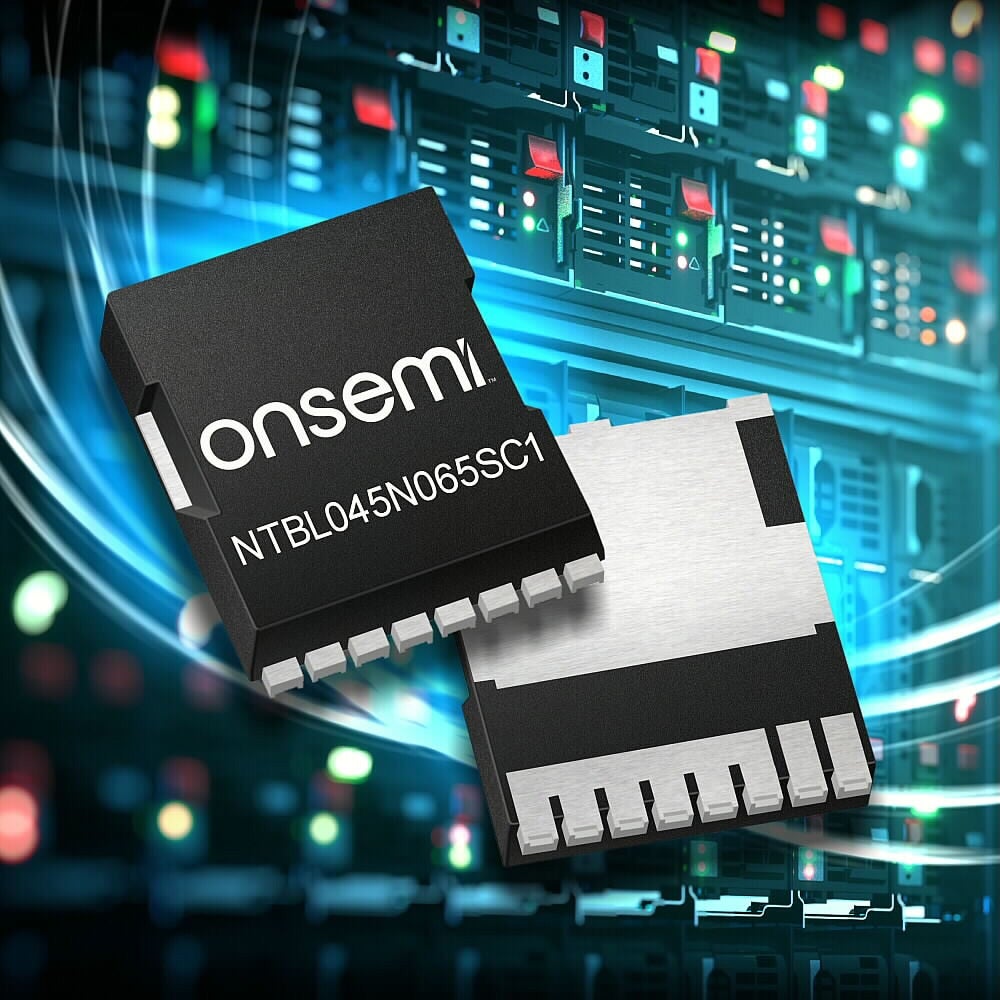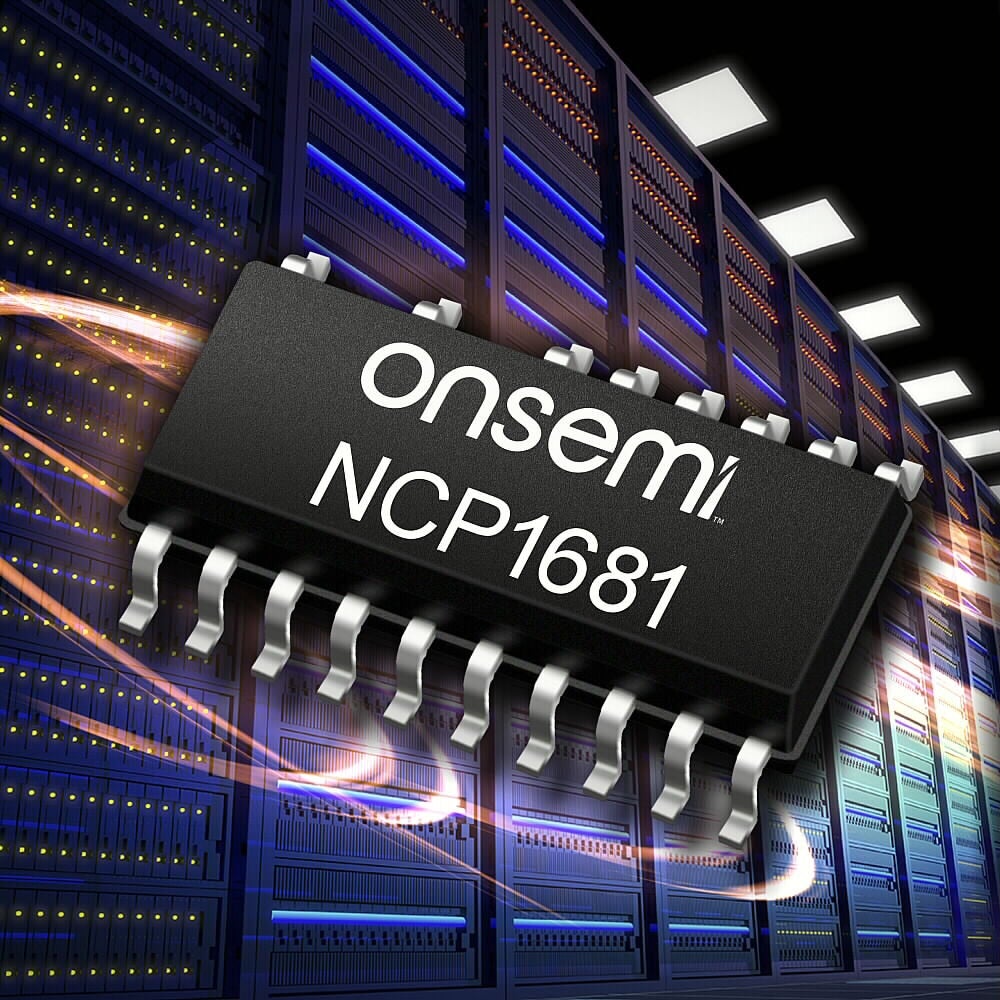As we look forward to the future in the new year, it is an excellent time to reflect on the past year’s achievements. onsemi has set a goal to be net zero by 2040, reducing emissions from operations and the value chain to contribute to a more sustainable future. Our intelligent power and sensing technologies play a critical role in reducing our customers’ emissions. onsemi products solve the most challenging customer problems across critical applications ranging from electric vehicles (EV), EV charging, energy infrastructure, factory automation, and advanced safety to 5G infrastructure. Examples of products that help empower decarbonization efforts include two shortlisted for the Electronics Industry Awards 2022: the NTBL045N065SC1 silicon carbide (SiC) MOSFET and NCP1681 Power Factor Controller (PFC).
NTBL045N065SC1 – 650 V Silicon Carbide (SiC) MOSFET - 33 milliohm, 650 V, M2 Technology
onsemi’s NTBL045N065SC1 is the world’s first TO-Leadless (TOLL) packaged silicon carbide (SiC) MOSFET. The MOSFET addresses the rapidly growing need for high-performance switching devices suitable for designs with high power density levels.
The NTBL045N065SC1 is ideally suited to switch-mode power supplies (SMPS), telecommunications, cloud systems, and industrial applications, as well as in end products such as telecom power supplies, server power supplies, solar inverters, uninterruptible power supplies (UPS) and energy storage. It meets the most challenging efficiency standards, including ErP and 80 PLUS Titanium, for designs that require it.
SiC MOSFETs, such as the NTBL045N065SC1, use a new technology that provides superior switching performance and higher reliability compared to Silicon. In addition, the low ON resistance and compact chip size ensure low capacitance and gate charge. Consequently, system benefits include the highest efficiency, faster operation frequency, increased power density, reduced EMI, and reduced system size. The TOLL package offers improved thermal and switching performance thanks to Kelvin Source configuration and lower parasitic source inductance. TOLL offers Moisture Sensitivity Level 1 (MSL 1).
onsemi supplies silicon carbide solutions with complete vertical integration capability, including SiC boule growth, substrate, epitaxy, device fabrication, best-in-class integrated modules, and discrete package solutions.
NCP1681 - Totem Pole Continuous Conduction Mode (CCM) / Multi-Mode (CrM-CCM) Power Factor Correction Controller
NCP1681 is the latest mixed-signal controller dedicated to bridgeless totem-pole PFC (TP PFC) topology. By eliminating the lossy input diode bridge of classical PFC topology, TP PFC improves efficiency by about 2%, enabling ultimate PFC efficiency of 99%. The NCP1681 targets ultra-high-density offline power supplies from 350 watts to 3 kilowatts in end products used in enterprise servers, network power devices, 5G telecommunication, industrial and high-performance computing, including gaming console and UHD TV power supplies.
In the past, TP PFC designs required using a microcontroller unit (MCU) which added design complexity and the need for coding. However, with the NCP1681, only a few external components and no coding are needed for a fully featured TP PFC solution, saving time, cost, and space.
Because much of the world’s electrical energy is supplied to the AC−DC power supplies found in almost all mains−powered equipment and devices, their efficiency has a significant impact on the contributing to emissions.
Efficiency (the ratio of useful output power to input power) is a relatively simple concept. The input power factor increases as the line current and line voltage move out of phase, hugely affecting the input power. Calculating true efficiency uses the apparent power (the product of input power and power factor), which may significantly reduce overall efficiency. Disturbances and inefficiencies propagate back through the utility network.
However, power factor correction (PFC) techniques can address the situation, and the concept is sufficiently important that it is now a regulatory requirement. EMC standards such as IEC 61000−3−2 limit the power in line harmonics that result from distorted line currents to improve the power factor.
Efficiency was mainly considered at its peak value in the past, which masked poor performance, particularly when the system operated at low power levels. New schemes such as the 80+ certification program require 80% efficiency at 20%, 50%, and 100% of full load to address this. The most stringent version of the 80+ standard is the ‘80+ Titanium standard’, which specifies at least 90% efficiency at 10% load and 94% efficiency at full load.
Conclusion
Despite the hopelessness we may sense against climate change’s impacts, we have the autonomy and power to change our future. onsemi is committed to developing the most innovative intelligent power solutions, like the NTBL045N065SC1 and NCP1681, to offer its customers the devices and tools to design systems that can shape the world of tomorrow by increasing power efficiency and reducing emissions.


